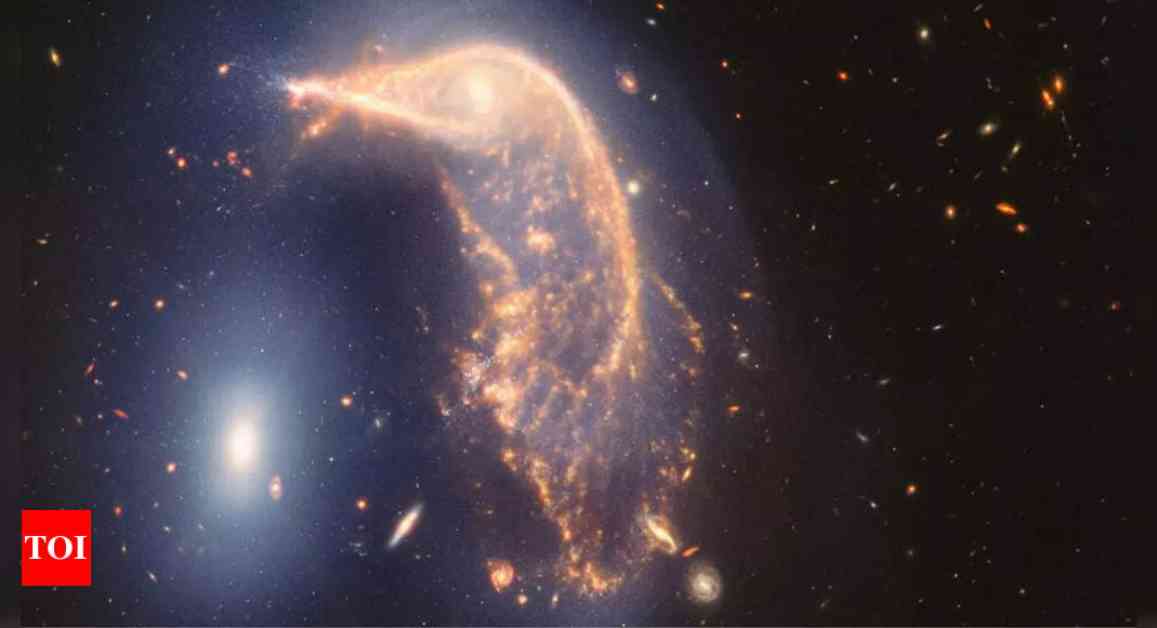The James Webb Space Telescope recently celebrated its second anniversary by capturing a stunning image of two galaxies in the midst of interacting with each other. These galaxies, known as Arp 142, are individually named Penguin (NGC 2936) and the Egg (NGC 2937). The telescope, which specializes in capturing infrared light that is beyond the range of human vision, shows these two galaxies engaged in a slow cosmic dance. The interaction between these galaxies began between 25 million to 75 million years ago, and they are expected to merge into one entity in a few million years. The telescope observed a blue haze, composed of a mixture of stars and gas, connecting the two galaxies.
The Penguin galaxy was once a spiral, but now it exhibits features resembling a beak, head, backbone, and fanned-out tail. This galaxy is rich in stars and dust, with gravitational forces causing thinner areas of gas and dust to collide and form new stars. The Egg, on the other hand, has always been an elliptical galaxy filled with old stars. Despite the Penguin appearing larger, the Egg has not been distorted by the larger galaxy due to their similar mass. These galaxies are located 10,000 light years apart from each other and approximately 336 million light years away from Earth.
The James Webb Space Telescope has been instrumental in capturing images of our universe and collecting valuable data known as spectra. This telescope, the largest and most powerful to exist in space, has played a crucial role in advancing our understanding of the cosmos. A collaborative effort between NASA, ESA, and the Canadian Space Agency (CSA), the James Webb Telescope has contributed significantly to unraveling mysteries of the universe, including the formation of rocky planets, black hole mergers, and supernova remnants.
NASA, the National Aeronautics and Space Administration, has been a key player in space exploration and scientific research since its establishment in 1958. From landing humans on the Moon during the Apollo missions to exploring Mars with rovers like Curiosity and Perseverance, NASA’s missions have expanded our knowledge of the universe. The agency also operates the International Space Station in partnership with other countries, conducts cutting-edge research in aeronautics, and develops innovative technologies for the benefit of life on Earth.
The James Webb Space Telescope continues to provide breathtaking images and valuable data that enhance our understanding of the cosmos. Its discoveries open new avenues for exploration and spark curiosity about the mysteries of the universe. As we marvel at the cosmic dance of galaxies like Penguin and the Egg, we are reminded of the vastness and beauty of the universe that surrounds us. Let us continue to support and celebrate the incredible work being done by organizations like NASA and the James Webb Telescope.












